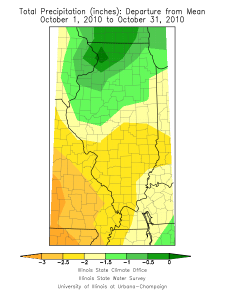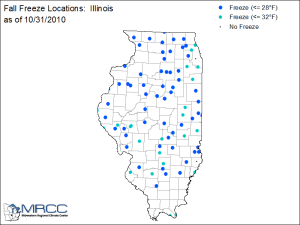NOAA’s Climate Prediction Center has come out with a new forecast for December and for December-February (winter). This is part of their routine update cycle.
December
The outlook for December in Illinois calls for an increased chance of above normal temperatures. An increased chance of above normal temperatures translates into just a few degrees above normal. Temperatures in Illinois have run an average of 2.9 degrees above normal for every month since March of this year. Therefore, continuing with a forecast for above-normal temperatures is not surprising.
The outlook calls for equal chances of above, below, or near-normal precipitation (or equal chances as they call it) in December in Illinois.
December-February (winter)
The outlook for December-February remains the same as last month. There is an increased chance of above-normal precipitation for all of Illinois. And, there is an increased chance of above-normal temperatures for the southern two-thirds of the state. See the figure below for more details.





